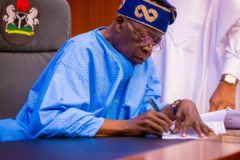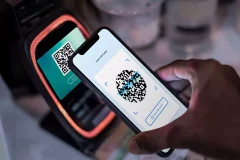
As of April 2022, there are 5 billion internet users worldwide, which is 63% of the global population, and of this number, 4.65 billion are social media users. The global creator economy is estimated to be worth over 100 billion dollars, and this has been attributed to the 2020 lockdown which allowed creators like TikTok megastar Khaby Lame, with over 143 million followers, to spring up.
But while this emerging industry has padded the wallets of creators in the United States and some parts of Europe like Britain and France, this profit has nearly eluded African creators due to policies made by companies like TikTok. The social media company does not include African creators in their TikTok Creator Fund monetisation scheme. But what about those with similar ambitions who live and work on the continent?
TechCabal sought to answer this question on Friday, June 24, at a webinar titled “How can African creators make more money?” as part of its TC Live series.
The discussion at the webinar was geared toward educating creators on the best ways to increase and diversify their income stream and connect with a global audience. The session also highlighted the numerous opportunities on the internet that the audience can use to make a living.
The discussion’s panelists were Solafunmi Sosanya, YouTube lead for East and West Africa; Peace Itimi, host of Founders Connect, a YouTube show where she interviews African founders on their journey; Korty EO, a rising Nigerian YouTuber; and Douglas Kendyson, CEO of Selar, an online platform that African creators can monetise their content. David Adeleke, a communications strategist and media analyst moderated the talk.
The biggest social media platforms uphold policies that make it difficult for African creators to profit from their content, but others are actively coming up with solutions. Selar paid over $1 million to African creators last year, and over 25,000 creators in 11 African countries have used the platform. In 2021, Flutterwave acquired Disha, a Nigerian platform for curating and selling digital content.
Douglas identified payment access as one of the key problems African creators face, especially international payments, and he gave the current cumbersome payment process on the continent as the driving force behind this problem. According to him, creators often have to navigate a tricky and tiresome process to access international funds. He advised creators to define their audience and build a solid reputation, noting that some people pay up to $12,000 on online courses based on the creators’ reputation.
One of the biggest obstacles African creators face, according to Sosanya, is a lack of awareness that they can earn money and even make a living from the content they post on social media. She referenced the YouTube Partner Programme, which African creators can leverage to earn dollars and a living just by posting content on YouTube as the platform’s way of allowing African content creators to profit from their work. She also assured attendees that there would always be an audience for any type of content.
Sosanya also offered sage advice on other things creators could do to boost their profiles online, emphasising the importance of seeking out collaborations to grow one’s audience, especially if the creators have a similar amount of followers. Korty agreed, and advised creators to forge partnerships with people who produce similar types of content, or those who can offer more content. She added that when she was building her online presence, she often collaborated with creators that created similar content and had similar followers.
Korty also advised content creators to diversify their sources of income, pointing out that no creator can trend forever. She advised the audience to experiment with different types of content and to always strive to improve it. She also implored them to switch platforms till they get it right, referencing how she moved from Instagram to YouTube to grow her follower count. This advice rings true; according to Linktree’s 2022 Creator Report “2 out of 3 creators produce 2–4 types of content”.
Itimi added that distribution and feedback are crucial in building a brand, especially for creators putting out content for a niche audience, as proper distribution will allow creators to reach their audience quicker. She suggested that creators pay close attention to the feedback their audience gives them; that was how she learnt that her followers preferred longer videos on her YouTube channel.
Kendyson encouraged African creators to believe in the universality of their work, noting that many have been neglecting to sell their content internationally out of a fear that their content would not resonate outside of the continent and that their target audience could only be Africans. He said that 9 times out of 10, content is translatable, as long as creators were offering their audience something of value. He advised creators to think in the long term when growing their audience.
You can watch the whole session on YouTube here.




















